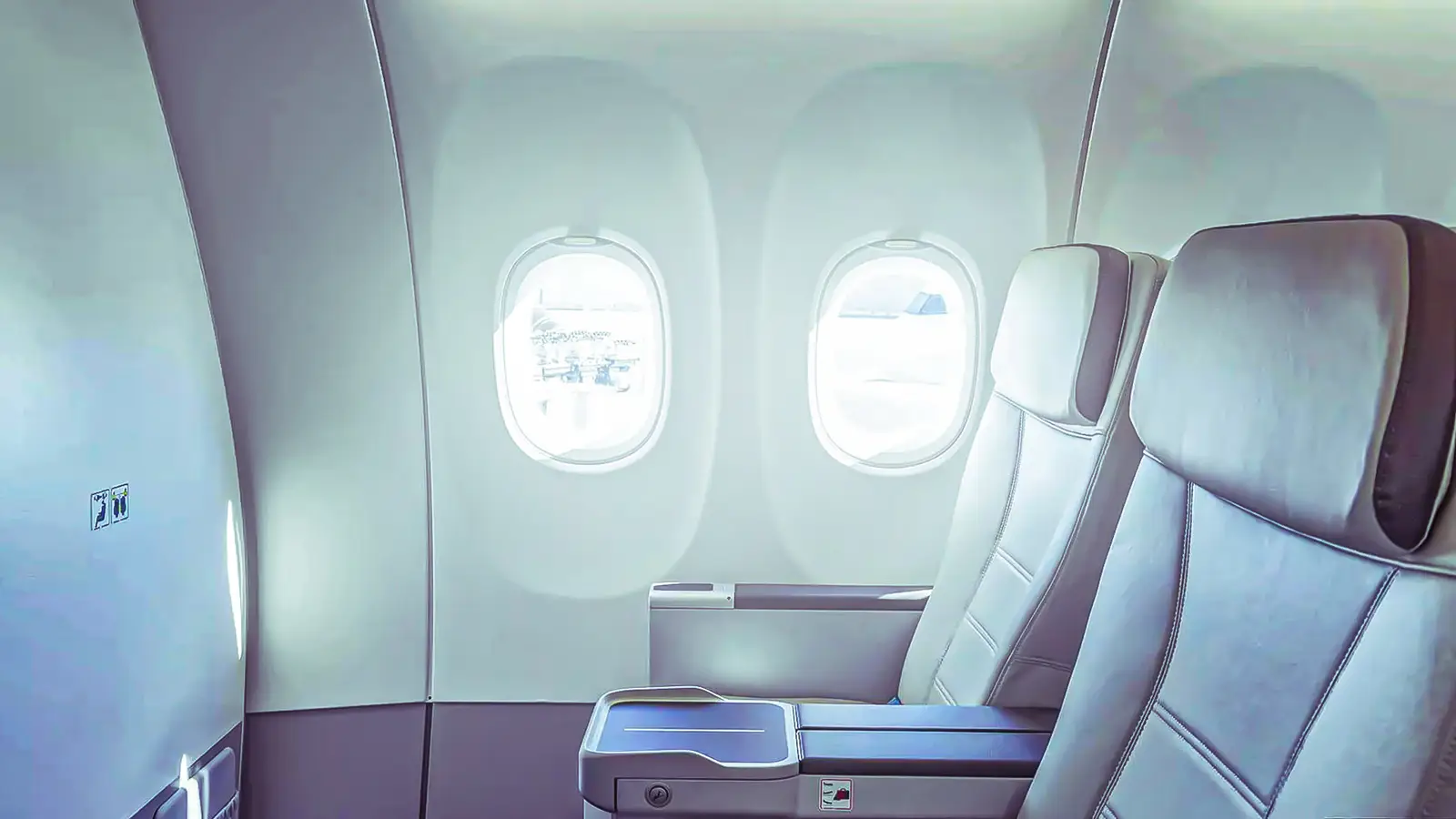Copyright Simple Flying

The Airbus A321XLR is shaping a new era of long-range narrowbody travel. Its ability to connect cities such as Madrid to Boston, or London to Delhi, is matched by an impressive focus on comfort and passenger well-being. Among its most talked-about features is its lower cabin altitude during cruise, a characteristic usually reserved for widebody jets. Passengers will experience less fatigue and better hydration levels thanks to this engineering achievement. Understanding how Airbus achieved this balance of technology and comfort reveals the aircraft’s significance to the future of aviation. Cabin altitude defines the effective air pressure passengers feel inside an aircraft. The lower the simulated altitude, the closer the air quality is to what people experience at ground level. The A321XLR maintains a cabin altitude closer to 6,000 feet than the 8,000 feet typical of older models. This results in reduced discomfort on long flights and a noticeable improvement in post-flight recovery. Airbus’ investment in cabin systems and materials enabled this level of comfort without compromising fuel efficiency or structural integrity. Design Choices That Redefined Narrowbody Comfort Airbus developed the A321XLR’s Airspace cabin to replicate widebody comfort in a single-aisle design. The aircraft incorporates advanced pressurization systems, airflow control, and humidity regulation for smoother long-haul travel. During test flights, engineers closely monitored cabin performance across different conditions to maintain stability. According to Airbus, extensive flight testing confirmed that cabin pressure remained remarkably constant even after many hours of cruising. The consistency gives passengers a sense of relaxation normally associated with much larger aircraft. The Airspace cabin features integrated lighting and sound insulation to enhance the sense of space. Airbus balanced environmental performance with passenger comfort, ensuring that even long-range flights remain restful. New materials allow the fuselage to support higher pressure differentials without adding unnecessary weight. These materials were crucial in maintaining efficiency while enabling the lower cabin altitude. The result is a single-aisle jet capable of matching widebody levels of comfort on routes previously unimaginable for this category. Even seat placement and panel curvature were redesigned to distribute pressure evenly across the cabin interior. Passengers sitting at the rear of the aircraft experience the same pressure and humidity levels as those at the front. This precision was achieved through new airflow distribution technology. Airbus’s focus on holistic cabin design goes beyond structural changes to include passenger experience science. It represents a major evolution in how single-aisle aircraft are engineered for endurance and comfort. Efficiency And Comfort In Perfect Balance Developing a long-range narrowbody that maintains low cabin altitude required Airbus to rethink its entire environmental control system. Lowering cabin altitude increases internal pressure, which can raise structural loads and energy use. To counter this, Airbus used advanced composites that are lighter and more resistant to pressure stress. According to Reuters, Airbus engineers had to balance comfort improvements against potential weight penalties and performance impacts. The final design achieved an optimal equilibrium between efficiency and comfort. The upgraded system automatically adjusts to maintain consistent air pressure throughout long-haul cruise conditions. It keeps the cabin at about 6,000 feet of altitude while the aircraft operates above 35,000 feet. This constant regulation minimizes ear discomfort and reduces physical strain on both passengers and crew. The environmental control unit integrates sensors that analyze pressure and temperature in real time. These digital improvements make the A321XLR’s system more responsive than those found in older aircraft generations. The benefits of this lower cabin altitude extend far beyond comfort alone. Improved hydration and oxygen levels contribute to reduced jet lag and fewer headaches after flight. Passengers feel more alert on arrival, which is vital for business travelers on intercontinental routes. Airbus’ long-term testing confirmed measurable physiological advantages among trial passengers. This approach reinforces the manufacturer’s strategy to position the A321XLR as the world’s first truly passenger-centric narrowbody for long-haul operations. Engineering Innovation Behind Pressure Stability The A321XLR’s lower cabin altitude is enabled by precision engineering. Its new pressurization system uses an advanced digital controller that responds instantly to altitude changes. The aircraft’s structure, built with reinforced composite layers, tolerates greater pressure differentials without fatigue. This provides a more stable atmosphere for passengers throughout the flight. According to AirInsight, Airbus tested the aircraft extensively under simulated long-haul pressures to verify system reliability. Maintaining a lower cabin altitude requires a delicate balance between airflow control and structural integrity. The pressurization system includes several automated valves that adjust air outflow to ensure steady pressure transitions. These systems reduce the sudden changes that once caused ear discomfort during climb and descent. The airflow is fine-tuned for even distribution along the fuselage, creating a quiet and balanced cabin environment. Such refinement helps the A321XLR deliver an experience comparable to much larger jets. The Airspace cabin’s thermal management system also plays a crucial role. It works alongside the pressurization unit to maintain consistent temperature and humidity levels. Sensors continuously monitor fluctuations in the cabin zones to maintain equilibrium between the front and aft sections. This technology maintains a uniform cabin atmosphere regardless of seat location. The result is a calm, refreshed feeling for passengers, even after eight or more hours in the air. How Passengers Feel The Difference In Flight Cabin altitude has a direct physiological effect on passengers. Traditional aircraft cabins are pressurized to simulate altitudes of around 8,000 feet, which can lead to dehydration and fatigue over time. The A321XLR’s lower setting of roughly 6,000 feet significantly mitigates these symptoms. Passengers report breathing more easily and feeling more alert during the flight. According to Key Aero, early test passengers on Iberia’s A321XLR long-haul routes have noticed fewer signs of fatigue after arrival. The difference becomes especially evident on long-range narrowbody routes. The lower cabin altitude, combined with improved humidity, reduces the effects of mild hypoxia. Passengers experience fewer headaches, less eye dryness, and a more natural balance of body temperature. Crew members also benefit from reduced fatigue, which helps sustain service quality. For airlines, these improvements enhance customer satisfaction and strengthen their long-haul brand positioning. Airbus has emphasized that comfort improvements do not add to operational complexity. The A321XLR’s systems are largely automated, allowing crews to focus on passenger experience rather than technical adjustments. The pressurization system’s reliability ensures consistent comfort across every flight. This reliability gives the A321XLR an edge over older aircraft still operating on long-haul missions. In practical terms, it delivers widebody comfort with narrowbody economics. Why Aircraft Cannot Be Pressurized To Sea Level While passengers might imagine that pressurizing a cabin to sea level would eliminate discomfort, it is not structurally feasible. At cruising altitudes of 35,000 feet, the air pressure outside the aircraft is extremely low. Pressurizing the cabin to sea level would create immense stress on the fuselage. According to Aviation Stack Exchange, this would require much thicker, heavier materials, which would severely affect performance. Aircraft designers, therefore, aim for an optimal midpoint between safety, comfort, and efficiency. The A321XLR’s 6,000-foot cabin altitude represents that ideal compromise. It provides a level of comfort far superior to older aircraft while remaining structurally efficient. Engineers selected materials capable of handling repeated cycles of expansion and contraction without fatigue. These innovations extend the aircraft’s lifespan and reduce long-term maintenance costs. Passengers receive nearly the same level of comfort as on a widebody flight without any trade-off in safety. Pressurization improvements also contribute to the aircraft’s environmental efficiency. By maintaining optimal internal pressure with lighter materials, Airbus minimizes excess fuel consumption. The aircraft’s lower weight helps offset the power required to sustain higher internal pressure. This combination ensures both passenger satisfaction and economic sustainability. The A321XLR demonstrates that comfort and environmental responsibility can coexist in one design. Looking Ahead To Future Cabin Innovations The Airbus A321XLR’s achievements in pressurization and comfort will influence future aircraft development. Airbus plans to apply lessons learned from its environmental systems to the Airbus A320neo family and future mid-market concepts. Lower cabin altitude, higher humidity, and stable temperature control are becoming new standards in cabin design. Feedback from flight tests has already shaped upcoming updates to the Airspace product line. Passengers can expect future Airbus models to offer similar levels of comfort. Manufacturers are also studying how cabin altitude interacts with sustainability goals. Reduced fatigue not only improves comfort but can influence scheduling and crew efficiency. As the aviation industry works toward carbon neutrality, cabin design will evolve alongside propulsion technology. Airlines will adopt cabins that balance wellness, efficiency, and environmental impact. The A321XLR stands as the first narrowbody to bring these principles together in a practical, commercially viable package. Passenger expectations will continue to rise as technology evolves. The A321XLR shows that comfort once limited to widebodies can now exist on smaller jets. Airbus’ advancements in pressurization and cabin materials will likely become industry benchmarks. As long-haul narrowbody routes grow more common, passengers will increasingly notice the difference that lower cabin altitude makes. The A321XLR has proven that innovation and comfort can share the same altitude.



